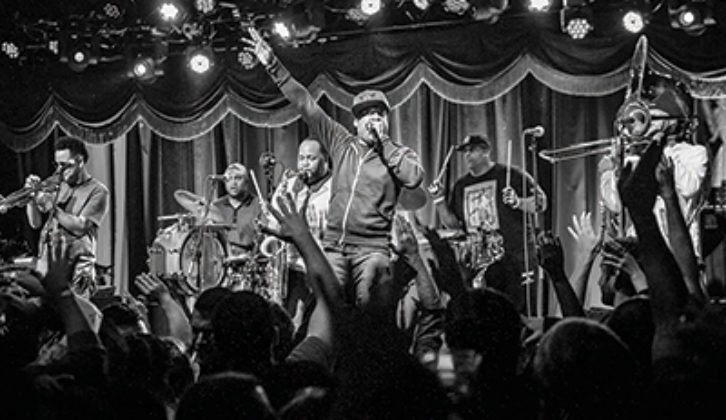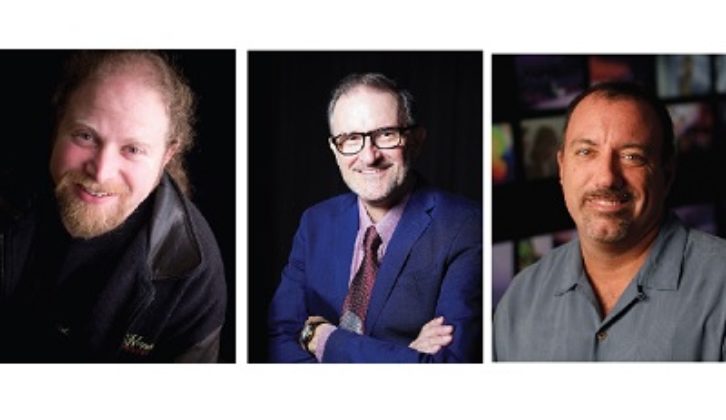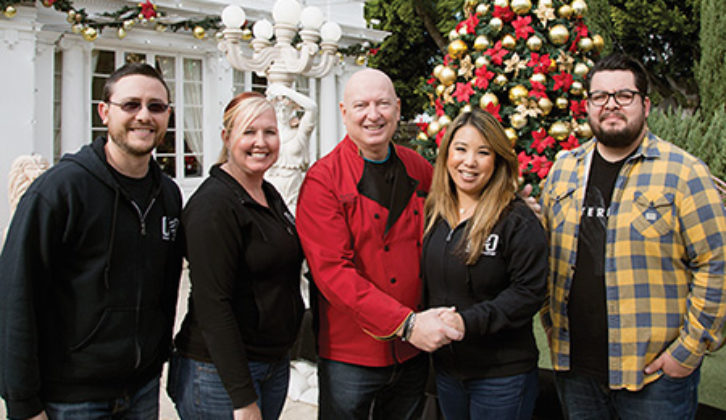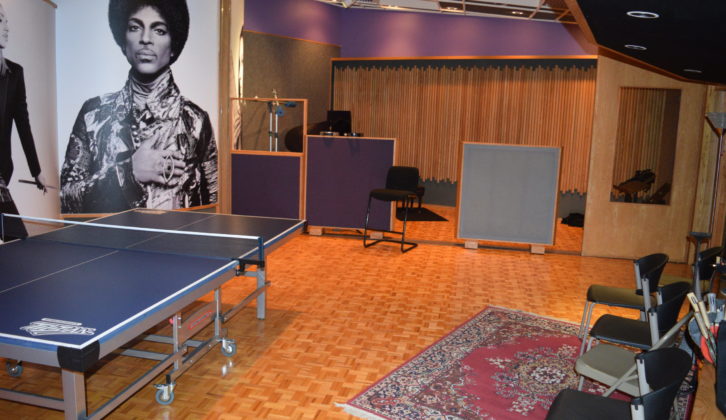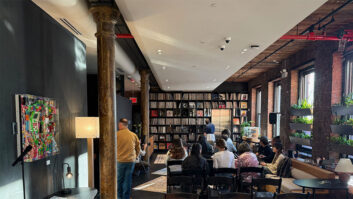NOTE: THIS ARTICLE CONTAINS MULTIPLE PHOTO GALLERIES—SCROLL DOWN TO SEE ALL OF THEM.
Chanhassen, MN (April 26, 2018)—Two years after the death of Prince, evidence materials developed during the Carver County Sheriff’s Office’s investigation have become public records. This includes hundreds of photos taken throughout the Paisley Park complex, among them the first-ever public look inside Prince’s tape vault, which was said to contain hundreds of unreleased songs.
On April 19, 2018, Carver County Attorney Mark Metz announced that no criminal charges would be filed following a two-year police investigation into Prince’s death on April 21, 2016. The artist’s passing was deemed to have been caused by “a significant overdose” after taking counterfeit Vicodin that contained the synthetic opioid fentanyl. Since Metz declined to file criminal charges, all the accumulated Carver County Sheriff law enforcement reports became public data the following day, under the Minnesota Government Data Practices Act.
Investigators originally took hundreds of photos on May 10 and 11, 2016, documenting their exploration of offices, bedrooms, studios, rehearsal spaces and other rarely seen areas of the famed $10 million, 55,000-square-foot Paisley Park complex, custom-built in 1987 in Chanhassen, MN. When police reached Prince’s tape vault, tucked away in Paisley Park’s basement, they were stopped in their tracks by a massive locked door; it turned out the secretive home to hundreds of tracks truly really was an actual vault—and only Prince knew the combination to get in.
OUTSIDE THE VAULT
As Sergeant DeWitt Meier recounted in a contemporaneous follow-up report now part of the public record, “On 5-11-2016 at about 0900 hours, we returned to finish the search of the building. We were unable to get into the vault in the basement without damaging it. An arraignment (sic) was worked out with Bremer Bank [which temporarily had control of Prince’s estate at the time—Ed.] to have Sheriff Office staff remain on site and outside the locked building until an expert could be brought in to open the vault. The bank had concerns that the vault contained numerous valuable recordings that could be damaged by unwanted exposure from outside the vault. When everything was searched except the vault, we took the evidence that had been collected and left.”
Investigators returned on May 15, 2016 to photograph the inside of Prince’s tape vault. Meier’s follow-up report notes, “On 05-15-2016 at about 1700 hours, I arrived at Paisley Park. There were numerous people present from the bank and a specialist who was going to open the vault and then put it back together so that the interior was secure.
“I was present when the vault door was breached and slightly opened. I saw the time as about 1910 hours. I watched at Deputy Wagner took photos of the interior of the vault. We searched the vault and did not find anything of evidentiary value. I found six zippered bank bags in a white garbage bag on a shelf in the northwest corner of the vault. One of the bags had the words (sic) “Opium” written on it. I looked in the bags and saw only cash of different denominations. The bag that said “opium” on it, I was unable to get the zipper to open. I used my pocket knife to slit the seam at the bottom of the bag to look inside. I saw only cash in the bag. All six of the bags were given by Agent Ryekeley to the Bremer Bank personnel. To my knowledge, the cash was never counted by any law enforcement at the scene.”
The newly released photos by Deputy Wagner, then, reveal to the public for the first time what the inside of Prince’s tape vault looked like during the artist’s lifetime.
THE VAULT
A wildly prolific musician, Prince wrote and recorded endlessly throughout his career, usually at Paisley Park. It’s well known that he wrote and recorded far more music than he could ever hope to release during his lifetime, so as a result, he simply threw tape after tape after tape into storage. As rumors of Prince’s tape vault circulated among fans over the years, the room became something of an urban legend—a modern-day Aladdin’s Cave, said to be filled floor to ceiling with untold musical riches. And in more recent times, former Prince proteges began verifying that the vault was no myth.
As engineer Robert “Cubby” Colby, who worked variously as Prince’s FOH and monitor engineer, and Paisley Park audio tech from 1980 to 1988, told Pro Sound News in 2016, “They estimate there’s over 1,200 unreleased songs in the vault; that’s an album of 12 songs every year for 100 years.” He added, “Our tech room downstairs, which was basically a music store by the time I left, was right there; you took the elevator down and it was the vault on one side and the door into the tech room on the other. It’s going to be a huge job to go through it.”
THE TECH ROOM
That’s no understatement either; in 2014, Prince himself discussed the vault with Rolling Stone, stating, “I didn’t always give the record companies the best song. There are songs in the vault that no one’s ever heard. There are several vaults; it’s not just one vault.” But in that same interview, even he acknowledged that not everything gathering dust was going to be his best work: “You know how Woody Allen does flicks all the time, and every three you get a masterpiece? You’ve got to go through the process and download it from your head. It’s all there; I can hear it all right now. I can hear five albums in my head right now.”
And that admission that the vault’s contents were of varying quality would align with what Colby told Pro Sound News: “[Prince] never cut corners with his live performance; that was what he really, really worked so hard at. In the studio, he would cut corners on quality in order for everybody else to keep up with how much stuff he was writing at the time.”
Retro PSN: Welcome 2 Prince—Inside the sound of the 2011 Welcome 2 America tour.
The Vault itself was the brainchild of Susan Rogers, who was Prince’s go-to studio engineer throughout the mid-80s. She told The Guardian in 2015, “I joined Prince in 1983 when he was preparing to do Purple Rain. I realized it would be smart for me to get his tapes together in one place. I was aware there were a lot of pieces missing. It became an obsession. I wanted us to have everything he’d ever recorded. I called up the studios he’d been using and said: ‘Have you got any Prince tapes’? This is his legacy. We need to protect these things. It’s an actual bank vault, with a thick door. It’s in the basement of Paisley Park. When I left in 87, it was nearly full. Row after row of everything we’d done. I can’t imagine what they’ve done since then.”
THE VIDEO VAULT
The hundreds of police investigation photos released by the Carver County Sheriff’s Office bear that out, documenting the overstuffed vault, the area immediately outside the vault with a floor covered in tape boxes, and a storage closet elsewhere in the facility—with little if any security, much less a vault door—jammed with video tapes. In other photos, recordings of 2013 sessions at New York City’s Electric Lady Studios can be spotted carelessly piled on the floor of a conference room.
CONFERENCE ROOM
Still other photos reveal the state of Paisley Park’s various studios at the time of Prince’s death. The studios were designed by Brett Thoeny (Boto Design; Santa Monica, CA) and acoustician Marshall Long (Sherman Oaks, CA). According to Long’s website, his main contribution was to tame sound from the HVAC system, decouple the studios and more, while Theony tackled studio layout and control room design.
STUDIO A
The control room to Studio A sports an SSL 8088 G+ with Ultimation console (72 mono and 8 stereo inputs) that was installed in 1993; it and a wealth of outboard gear were kept in top shape, as its owner was likely to walk in and start working at a moment’s notice.
STUDIO B
Carver County Sheriff’s Office
Carver County Sheriff’s Office
Carver County Sheriff’s Office
Carver County Sheriff’s Office
Carver County Sheriff’s Office
Carver County Sheriff’s Office
Carver County Sheriff’s Office
Meanwhile, as Colby recounted to Pro Sound News, the gear in Studio B came from Prince’s home prior to Paisley Park’s construction: “What is in Studio B now was in his home. I was there for all of that install. He put in a custom-built API, completely discrete and built for his height, his reach. It took over a year. I did all the internal work; I used to have a key to the house and would drive down to the back and let myself in, getting there before the techs showed up. I worked through the holidays to get it done. While that was being done, he was in Los Angeles, and by the time we got the studio done in the home, Paisley Park Studios was almost complete.
STUDIO C
Carver County Sheriff’s Office
Carver County Sheriff’s Office
Carver County Sheriff’s Office
Carver County Sheriff’s Office
“They had built A, which has the big SSL in it, and C, which had a Soundcraft console and was mainly the band rehearsal room. Then after we rehearsed and learned everything, we moved into the big production stage, which was big enough to drive a semi into and turn it around. It’s a phenomenal facility.”
That facility is now open to the public, and as a result, the police photos from May, 2016 capture a moment in time. Today, Paisley Park has been cleaned up and turned into a museum celebrating its former occupant’s life, while the contents of Prince’s tape vault have since been moved to the Los Angeles bureau of entertainment media storage specialists Iron Mountain. According to The New Yorker, that change of venue came just time, with the magazine citing court documents that state there were “several indications of damage and degradation due to poor humidity and temperature controls” inside the vault, so much so that there was “evidence of water intrusion on the walls and ceiling” and that some tape boxes “adhered to shelves and had to be peeled off.”
Whether all—or even a small portion—of Prince’s tape vault can or will be released remains to be seen, and with few clear indicators as to who owns the music (Prince didn’t leave a will), legal conditions may prevent music getting out even if the tapes’ physical conditions do not. To date, only a scant few “new” tracks have been issued since Prince’s death, the most recent being his original, unreleased recording of “Nothing Compares 2 U,” a song he composed for The Family that later became a worldwide hit for Sinead O’Connor. The track was released on April 19, 2018, commemorating the second anniversary of his death.








